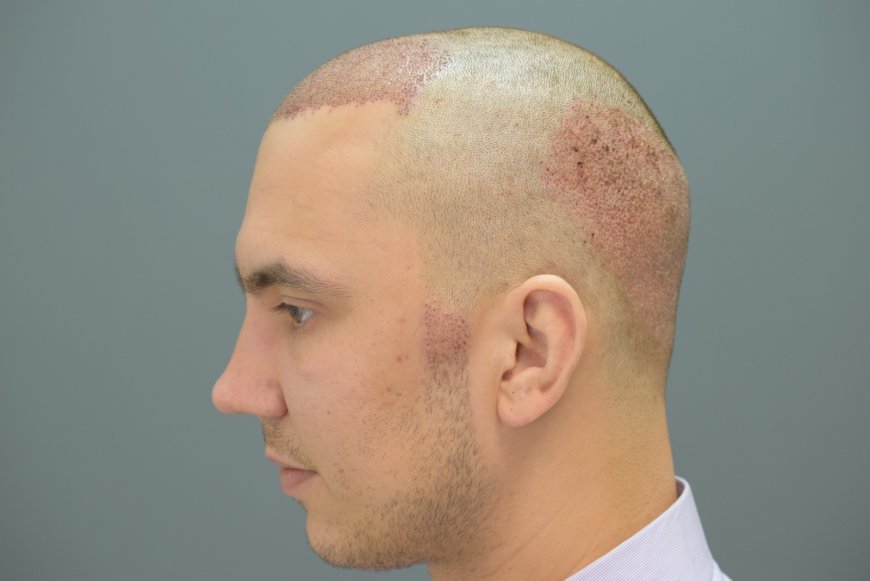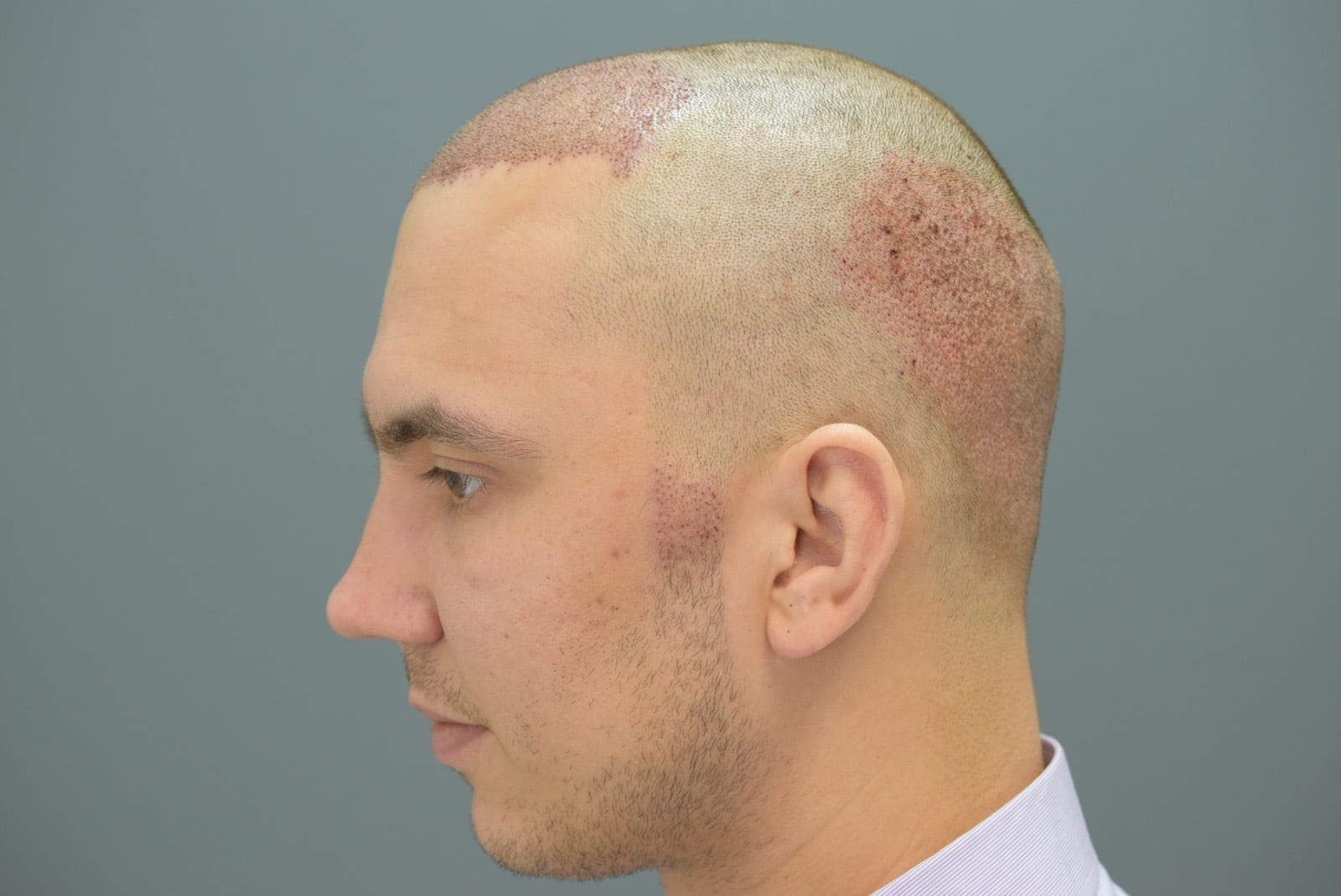Cost Over Time: Is a Hair Transplant a Long-Term Investment?
it's important to consider the long-term financial commitment involved. Is a hair transplant تكلفة زراعة الشعر truly a long-term investment? Will the costs continue to add up over time, or does the one-time expense provide lasting value?
Hair loss is a common concern that can affect self-esteem, self-image, and overall confidence. As such, many individuals turn to hair transplants as a solution to restore a full, natural-looking head of hair. While hair transplants are widely regarded as a permanent and effective treatment for hair loss, it's important to consider the long-term financial commitment involved. Is a hair transplant تكلفة زراعة الشعر truly a long-term investment? Will the costs continue to add up over time, or does the one-time expense provide lasting value?
In this blog, we'll explore the costs associated with a hair transplant, including what you can expect in terms of both initial and long-term financial commitments. By examining the financial aspects over time, you can make a more informed decision about whether a hair transplant is a good investment for your future.
1. Initial Hair Transplant Costs

The first thing to consider when evaluating the long-term financial impact of a hair transplant is the initial cost of the procedure. A hair transplant is typically a one-time surgery that offers a permanent solution to hair loss. The cost can vary depending on several factors such as the technique used (FUT vs. FUE), the number of grafts required, the clinic's location, and the surgeon's expertise.
- FUT (Follicular Unit Transplantation): This procedure involves removing a strip of skin from the back of the scalp and dissecting it into individual grafts. It is generally more affordable, with prices ranging from $3,000 to $8,000.
- FUE (Follicular Unit Extraction): This technique involves extracting individual hair follicles from the scalp and transplanting them one by one. FUE is less invasive but typically more expensive, ranging from $4,000 to $15,000, depending on the extent of hair loss and the number of grafts needed.
While the initial cost may seem high, it's important to note that a hair transplant is a one-time procedure, unlike other treatments for hair loss that require ongoing maintenance.
2. No Ongoing Treatment Costs
One of the key advantages of a hair transplant is that it offers a permanent solution to hair loss. Unlike medications such as Minoxidil (Rogaine) or Finasteride (Propecia), which require regular use and can accumulate significant costs over time, a hair transplant provides a lasting result with no need for continuous treatments.
-
Medications for Hair Loss: For example, a month’s supply of Minoxidil can cost around $20 to $40, and Finasteride typically costs between $30 to $70 per month. Over the course of a year, this can add up to $240 to $840, and these costs continue year after year. Hair transplants, however, are a one-time expense with no recurring medication costs.
-
Hair Growth Shampoos and Topical Solutions: Additionally, many individuals with hair loss opt for shampoos and topical solutions designed to promote hair growth or slow down hair thinning. These products often cost $30 to $80 per month, amounting to hundreds of dollars annually.
In contrast, once you’ve paid for a hair transplant, you won’t need to invest in these ongoing treatments or products. This can make the hair transplant an appealing choice from a financial standpoint, especially when compared to long-term treatments that require continuous investment.
3. Post-Transplant Care and Expenses
While a hair transplant offers permanent results, there are still some post-procedure costs to consider. Most of these expenses are temporary and related to recovery and aftercare.
- Medications: After the procedure, your surgeon may prescribe antibiotics, pain relievers, or anti-inflammatory medications to manage any discomfort and reduce the risk of infection. These prescriptions can cost anywhere from $20 to $100 depending on the medications required.
- Shampoo and Scalp Care Products: Special shampoos and treatments may be needed to care for your transplanted hair in the weeks following the procedure. These can cost between $30 to $60 for a few months of treatment.
- Follow-Up Visits: Some clinics include follow-up visits as part of the initial cost of the transplant, but others may charge separately for these visits, typically ranging from $50 to $200 per session.
Although these costs are associated with the recovery period, they are not ongoing expenses, and they typically end once the healing process is complete.
4. Potential Need for Touch-Ups or Additional Sessions
Though a hair transplant is considered a permanent solution, it’s important to understand that individual results can vary. Some people may need a second procedure if the transplanted hair does not fully take or if their hair loss continues in areas not treated by the original transplant.
-
Touch-Ups: If additional grafts are needed or if some areas experience hair loss in the years following the procedure, you may need a touch-up procedure. These touch-ups are typically less expensive than the original procedure, but they still come with a cost. The cost of touch-ups can range from $1,500 to $4,000, depending on the number of grafts required.
-
Long-Term Hair Loss: It’s also important to note that, in some cases, hair loss may continue even after a transplant. If you continue to experience hair loss in untreated areas, additional sessions may be necessary to address those areas. This is an essential consideration when planning your long-term budget.
That said, many individuals find that the initial hair transplant provides satisfactory and lasting results, reducing the need for further procedures.
5. Hair Transplant Costs Versus Other Treatments Over Time
When comparing the cost of a hair transplant to other hair loss treatments, it’s clear that the one-time expense of a transplant often comes out ahead in the long run.
-
Hair Loss Medications: As previously mentioned, the costs of medications such as Minoxidil and Finasteride can add up over time, often totaling $240 to $1,000 per year. This can become a significant financial burden, especially when these treatments are required for a lifetime to maintain results.
-
Laser Therapy: Laser therapy devices, such as laser combs and helmets, are another popular option for people experiencing hair thinning or loss. These devices can cost anywhere from $200 to $600, but they also require regular use to maintain results. The total cost over time could easily exceed the price of a hair transplant, especially when factoring in the need for continuous use over many years.
-
Hairpieces or Wigs: For those who choose non-surgical solutions such as wigs or hairpieces, the costs can quickly add up. High-quality wigs can range from $500 to $2,000 or more. The need to replace these items every 1 to 2 years adds additional costs, making this a much more expensive long-term solution compared to a hair transplant.
6. The Financial Benefits of a Hair Transplant
When looking at the cost over time, the financial benefits of a hair transplant become more apparent. While the initial cost may seem steep, the fact that hair transplants provide permanent results means that you won’t have to spend on continuous treatments, medications, or other alternatives. After the procedure, you can enjoy restored hair without having to invest money into products or services that will drain your wallet over time.
Moreover, many people find that the improvement in their appearance and self-confidence after a successful hair transplant results in a positive impact on their professional and personal lives. This can lead to better career opportunities, increased social interactions, and an improved quality of life, all of which can provide significant value over time.
7. Making the Long-Term Financial Commitment
It’s essential to consider the long-term commitment involved when deciding whether a hair transplant is right for you. While the initial cost may seem high, the potential savings in medications, products, and future procedures make it an investment that can offer significant returns. The key is to weigh the upfront cost against the long-term savings and the benefits of restored self-confidence and appearance.
When deciding on a hair transplant, consider not only the financial costs but also the value it will provide in the long run. If you’re committed to achieving a permanent solution to your hair loss, the investment can be well worth it.
Conclusion: A Hair Transplant as a Long-Term Investment
A hair transplant can certainly be a significant investment, but when viewed in the context of long-term value, it often proves to be the most cost-effective and rewarding option. With no ongoing treatment costs, minimal post-procedure expenses, and the potential to avoid additional sessions in the future, a hair transplant can offer lasting financial savings compared to other hair restoration treatments. Ultimately, a hair transplant represents not just a financial investment, but a life-changing one, giving you back your hair, confidence, and sense of self.

 saroosh
saroosh 